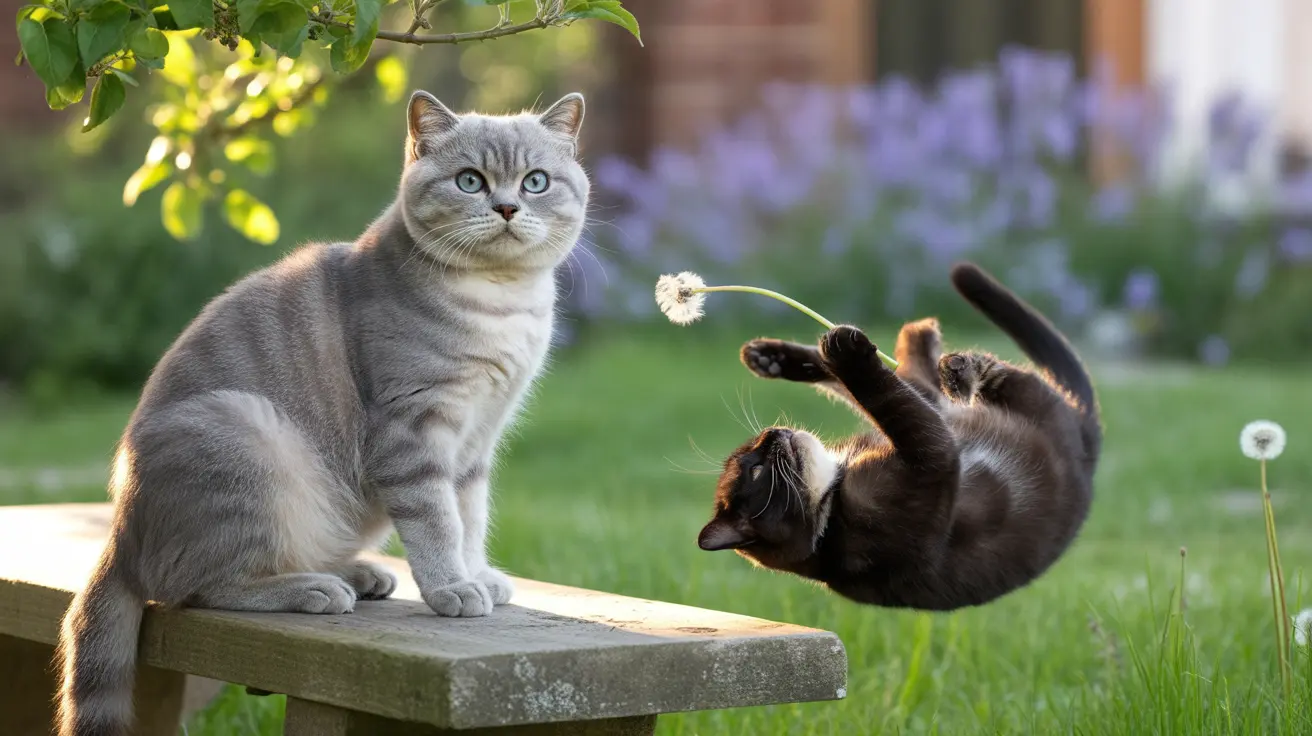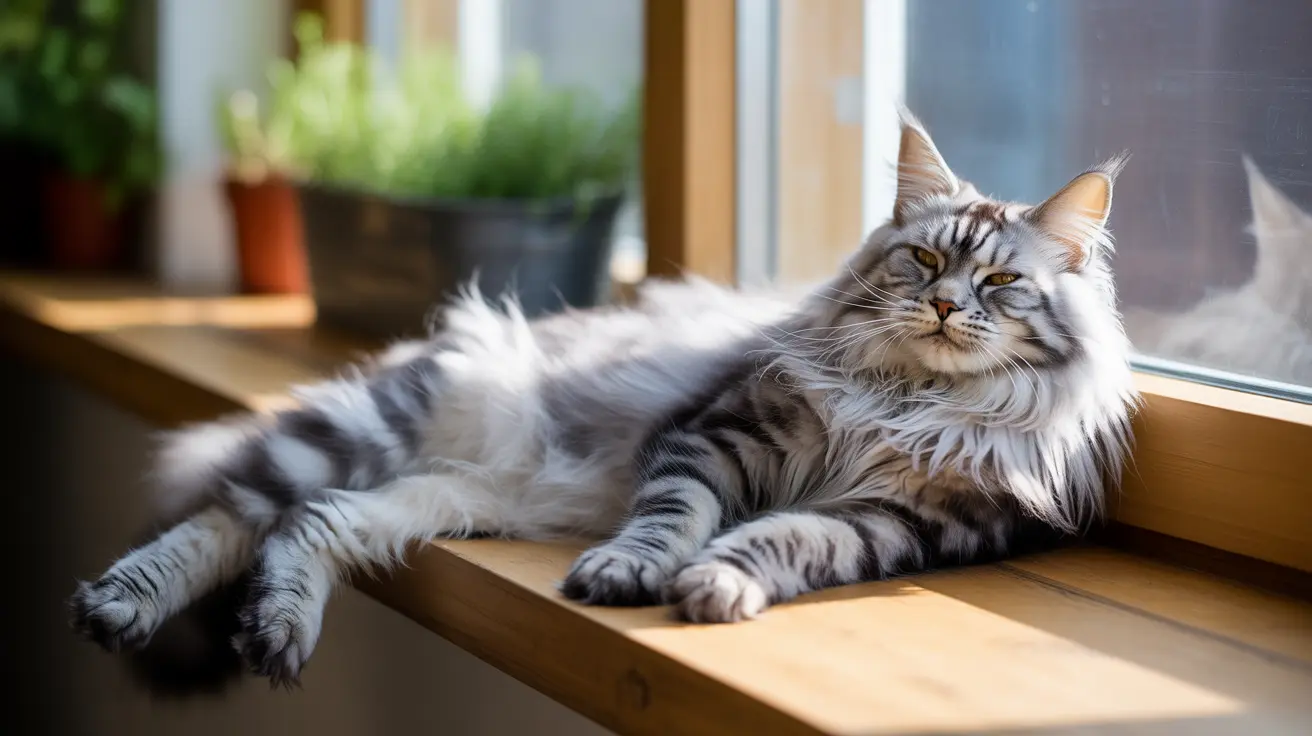Common Cat Myths Debunked: Separating Fact from Fiction for Better Feline Care
For centuries, cats have captured human imagination, spawning countless myths, superstitions, and misconceptions that persist even today. These widespread beliefs about our feline companions often influence how we care for them, sometimes to their detriment. From medieval folklore about black cats bringing misfortune to modern misunderstandings about their dietary needs, these myths can impact everything from adoption rates to daily care practices.
Understanding the truth behind these common cat myths debunked is essential for any cat owner or prospective adopter. By separating fact from fiction, we can provide better care for our feline friends and develop stronger, more informed relationships with them. This comprehensive examination of ten prevalent cat myths will help you become a more knowledgeable and effective cat caregiver while dispelling harmful misconceptions that have persisted for generations.
The Black Cat Superstition: Cultural Myths vs. Reality
Perhaps no cat myth is more pervasive or damaging than the belief that black cats bring bad luck. This superstition has deep historical roots, stemming from medieval associations between black cats and witchcraft. However, the reality is far more complex and culturally dependent than many people realize.
Interestingly, black cat superstitions vary dramatically across cultures. In Japan, a black cat crossing your path is considered good luck, while in much of Europe and the United States, it's viewed as a bad omen. Germany takes this cultural variation even further—the direction a black cat walks may predict either good or bad fortune depending on local beliefs.
Unfortunately, these unfounded superstitions have real-world consequences. Black cats are statistically harder to rehome from shelters, leading to higher euthanasia rates for these beautiful animals. The truth is that black cats offer the same unconditional love and affection as any other cat, regardless of their coat color. Their personalities, health, and capacity for companionship have absolutely nothing to do with superstition.
Cat Whiskers: Sensory Tools, Not Lucky Charms
Cat whiskers serve as sophisticated sensory tools that help felines navigate their world with remarkable precision. These specialized hairs, called vibrissae, are deeply rooted and connected to the nervous system, allowing cats to detect air currents, gauge space dimensions, and sense nearby objects even in low light conditions.
Despite their important biological function, many people believe that finding a cat whisker brings good luck or can protect against various misfortunes, including car troubles. This myth has no basis in scientific fact. Whiskers naturally shed and regrow as part of a cat's normal physiological process, making found whiskers no more special than any other naturally shed hair.
The real value of understanding cat whiskers lies in recognizing their sensory importance. Owners should never trim or cut their cat's whiskers, as this can disorient the animal and impair their ability to navigate safely through their environment.
The Nine Lives Fallacy: Resilience vs. Reality
The saying that cats have nine lives represents one of the most enduring pieces of feline folklore, but it's purely symbolic rather than literal. This myth likely arose from observations of cats' remarkable ability to survive dangerous situations due to their agility, quick reflexes, and flexible spines.
Cats possess a "righting reflex" that often helps them land on their feet when falling, and their flexible backs contribute to their survival in various precarious situations. However, cats only have one life and can be seriously injured or killed from falls, especially from windows several stories high. This reality makes proper safety measures, such as securing windows and balconies, essential for responsible cat ownership.
The resilience that inspired this myth should be appreciated for what it truly represents: cats' natural adaptations that help them survive, not supernatural protection that makes them invulnerable to harm.
Historical Misconceptions: Cats and the Medieval Plague
One of history's most tragic misconceptions involved blaming cats for spreading the bubonic plague during the Middle Ages. This false belief led to widespread persecution and killing of cats throughout Europe, ironically contributing to the very problem people were trying to solve.
The real culprit behind plague transmission was the rat flea, which carried the deadly Yersinia pestis bacteria. By reducing cat populations, medieval communities inadvertently allowed rat populations to flourish, creating ideal conditions for the plague's spread. Cats, being natural predators of rats, would have actually helped control the disease if their populations had been maintained.
This historical example demonstrates how dangerous myths about cats can have far-reaching consequences, affecting not just individual animals but entire communities and public health outcomes.
Dietary Myths: The Milk Misconception
Contrary to popular imagery of cats happily lapping up bowls of cow's milk, most adult cats are actually lactose intolerant and should not consume dairy products. This widespread misconception has led countless well-meaning owners to offer milk as a treat, often resulting in digestive upset for their feline companions.
Kittens naturally produce the enzyme lactase to digest their mother's milk, but most cats lose this ability as they mature. When adult cats consume cow's milk, it can cause stomach upset, diarrhea, and other gastrointestinal issues. For cats that enjoy milk-like treats, specially formulated cat milk products are available that are lactose-free and safer for feline consumption.
Understanding proper feline nutrition goes beyond avoiding milk. Cats require balanced, species-appropriate nutrition, and table scraps are generally unsuitable for maintaining optimal health. Consulting with veterinarians about appropriate diets helps ensure cats receive the nutrients they need without harmful additives.
Moving Stress Solutions: Beyond the Butter Myth
The belief that rubbing butter on a cat's paws helps them adjust to new environments and find their way home is not only ineffective but can also cause unnecessary stress to the animal. This myth likely persists because people desperately want simple solutions to help their cats during transitions, but the reality requires more thoughtful approaches.
Cats adjust to new environments primarily through scent familiarity and gradual acclimatization. Instead of butter applications, effective strategies include bringing familiar items like bedding, toys, and food dishes to the new location. Providing quiet spaces where cats can retreat and observe their new surroundings also helps reduce relocation stress.
Additional behavioral strategies that actually work include maintaining consistent feeding routines, using synthetic pheromone diffusers, and allowing cats to explore their new space gradually rather than overwhelming them with complete access immediately.
Toxoplasmosis and Pregnancy: Risk Assessment and Safety
The relationship between cats, toxoplasmosis, and pregnancy represents one of the most misunderstood aspects of feline ownership. While cats can carry Toxoplasma gondii, the actual risk to pregnant women is significantly lower than many people believe, especially when proper hygiene measures are observed.
Many cats and humans develop immunity to toxoplasmosis after initial exposure, and transmission primarily occurs through contact with infected feces that have been sitting for more than 24 hours. Pregnant women can safely interact with cats by avoiding direct contact with litter box contents and ensuring someone else handles litter box maintenance, or wearing gloves and washing hands thoroughly if they must do it themselves.
Additional safety guidelines include keeping cats indoors to prevent hunting behavior that could lead to infection, ensuring cats eat commercial food rather than raw meat, and maintaining regular veterinary care. These simple precautions allow expectant mothers to continue enjoying their feline companions safely.
Wound Care Misconceptions: When Licking Helps and Hurts
The belief that cats' saliva has healing properties and that licking wounds is always beneficial represents a partial truth that can become problematic when taken too far. While cats' licking behavior can help remove debris from minor wounds, excessive licking can actually worsen injuries and delay healing.
Cat saliva does contain some antibacterial properties, and the mechanical action of licking can clean superficial wounds. However, serious injuries require proper veterinary attention, and persistent licking can introduce bacteria, prevent proper healing, and cause additional tissue damage.
Responsible wound care involves assessing the severity of injuries and seeking professional medical attention when needed. For minor scrapes, gentle cleaning and monitoring may be sufficient, but deeper wounds, punctures, or injuries that don't heal properly require veterinary intervention regardless of the cat's natural grooming instincts.
Feline Allergies: Understanding Protein Triggers
Many people believe that cat fur causes allergic reactions, but the real culprit is a protein called Fel d 1 found primarily in cat saliva, which then spreads to fur through grooming. This misconception has led to the myth that some cat breeds are completely hypoallergenic, when in reality, no cat breed is entirely allergen-free.
While no truly hypoallergenic cat breed exists, some cats produce fewer allergens than others. Factors that can influence allergen levels include the cat's sex, age, and individual genetics. Male cats typically produce more allergens than females, and neutering can reduce allergen production.
Allergy management strategies for sensitive individuals include regular grooming by non-allergic household members, frequent cleaning of areas where cats spend time, using air purifiers, and consulting with allergists about appropriate medications or immunotherapy options. These approaches can help cat-loving individuals manage their sensitivities while maintaining feline companionship.
Night Vision Realities: Low Light vs. Complete Darkness
The myth that cats can see in complete darkness has led to misunderstandings about feline vision capabilities. While cats have remarkable adaptations for low-light vision, they still require some ambient light to navigate effectively.
Cats' superior night vision comes from several anatomical adaptations: a higher number of rod cells in their retinas, a reflective layer called the tapetum lucidum that amplifies available light, and pupils that can dilate widely to gather maximum light. These adaptations allow cats to see clearly in light conditions that would leave humans essentially blind.
However, in situations of complete darkness—such as a windowless, sealed room with no light sources—cats cannot see any better than humans. They rely on their other enhanced senses, including hearing, smell, and whisker sensitivity, to navigate in true darkness. Understanding these limitations helps owners provide appropriate lighting and safety measures for their cats.
Frequently Asked Questions
- Are black cats really harder to adopt from shelters?
Yes, unfortunately, black cats do face longer adoption times due to persistent superstitions. However, they make equally wonderful companions as cats of any other color, offering the same love, affection, and personality traits regardless of their coat color.
- Can I safely keep cats while pregnant?
Absolutely. Pregnant women can safely interact with cats by avoiding direct litter box contact and maintaining good hygiene practices. The risk of toxoplasmosis is low when proper precautions are followed, and many people develop immunity to the parasite.
- What should I feed my cat instead of milk?
Adult cats should drink fresh water as their primary beverage. If you want to offer a milk-like treat, choose specially formulated lactose-free cat milk products available at pet stores. Focus on providing balanced, species-appropriate cat food for optimal nutrition.
- How can I help my cat adjust to a new home?
Bring familiar items like bedding and toys, maintain consistent feeding routines, provide quiet retreat spaces, and allow gradual exploration of the new environment. Avoid myths like applying butter to paws, which only causes stress.
- Do cats actually have better night vision than humans?
Yes, cats can see much better than humans in low-light conditions due to anatomical adaptations in their eyes. However, they cannot see in complete darkness and still need some ambient light to navigate effectively.
- Are some cat breeds truly hypoallergenic?
No cat breed is completely hypoallergenic, as all cats produce the Fel d 1 protein that triggers allergies. However, some individual cats produce fewer allergens than others, and various management strategies can help reduce allergic reactions.
- Should I be worried if my cat licks their wounds?
Light licking of minor wounds can help remove debris, but excessive licking can worsen injuries and delay healing. Monitor wound healing progress and consult a veterinarian for serious injuries or wounds that don't heal properly within a reasonable time.
Conclusion
Dispelling these common cat myths debunked throughout this article empowers cat owners and enthusiasts to make better-informed decisions about feline care. From understanding the cultural nature of black cat superstitions to recognizing the realities of cat vision and dietary needs, accurate knowledge leads to healthier, happier cats and stronger human-animal bonds.
The persistence of these myths often stems from centuries of folklore, cultural traditions, and well-meaning but misguided advice passed down through generations. By embracing scientific understanding and evidence-based care practices, we can move beyond these misconceptions to provide our feline companions with the thoughtful, informed care they deserve. Whether you're a longtime cat owner or considering adoption, remember that the best foundation for any relationship with cats is knowledge, patience, and respect for their true nature rather than mythical expectations.






